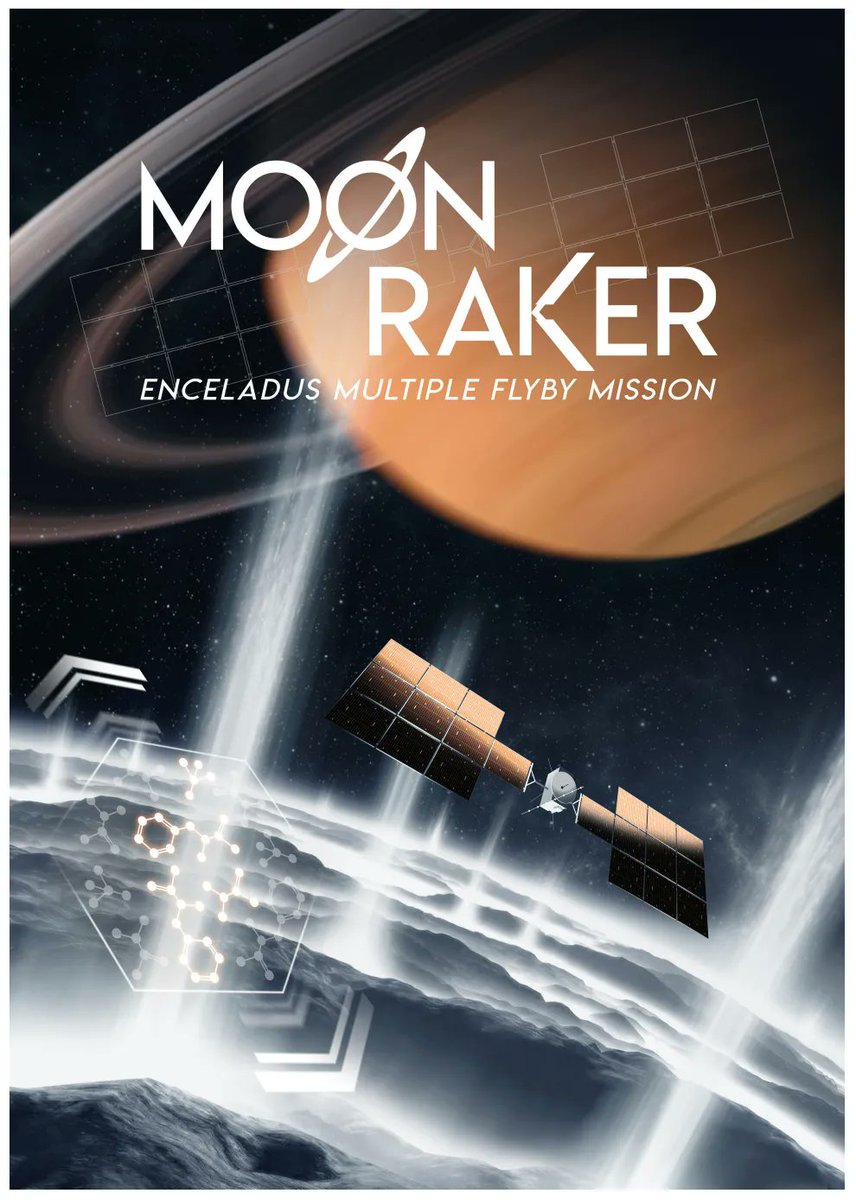There are plenty of exciting places in the solar system to explore. But few are more interesting than Saturn’s moon Enceladus. It’s one of the only planetary bodies known to have all six necessary components of Earth-based life. It has an active ocean and most likely hydrothermal vents, similar to those on Earth, where some species exist entirely separately from any solar-powered biosphere. All of this makes it one of the most likely candidates for life in the solar system – and the center of much astrobiological attention. Now a team from a variety of European countries and the US has proposed a mission to the moon that could profoundly impact our understanding of our place in the universe – if the European Space Agency (ESA) funds it.
Nicknamed Moonraker, presumably after the 1979 Bond film of the same name, the space probe takes its moniker a little more literally. It is designed to “rake” the moon by collecting particles that Cassini found jetting out of the south pole of Enceladus.
The paper detailing the proposal is available on arXiv, and the project was initially proposed in response to ESA’s call for ideas for an M-class mission architecture. M-class missions are the “medium” workhorses of ESA mission infrastructure. Limited to around 2100 kg so it can launch on an Ariane 62 rocket, other M-class missions include Solar Orbiter and PLATO, which we’ve covered extensively here at UT.
Moonraker has a different focus, though. It will take approximately 13 years to reach the Saturnian system, including two gravity assists from Earth and one from Venus. But more importantly, it will bring who new advanced set of instruments to bear on one of the most exciting places in the solar system.
One advantage of the Moonraker concept is that it’s not really introducing any completely novel science equipment. Most of what would be required has already been flown in space or will fly soon, such as on JUICE and the Mars Sample Return mission. Using flight-proven technologies will help limit another area of constraint for M-class mission – costs.
Most M-class missions are limited to €550 million ($536 million) as a mission cap. But that money gets a lot of science, as Moonraker would have a complete suite of scientific instruments to attempt to capture as much data as it can about both the interior and exterior of Enceladus.
To do so, it will rely on a set of eight different detectors as sensors to complete three different main mission objectives. The first objective is to establish whether modern-day Enceladus is habitable. The second is to understand how the plumes made famous by Cassini are actually produced. And the third is to try to figure out where Enceladus came from – there has been some debate on this point, as some scientists put its formation as recently as 220 million years ago.
Accomplishing these science objectives will take a concerted effort, and Moonraker will be equipped to manage it. A combination of spectrometers, cameras, and other sensors make up almost 40 kg of scientific equipment for its payload. These will capture dust particles and analyze the organics in them, which will be done by a mass spectrometer, as well as understanding what is in the water vapor ejected as part of the plume (handled by a sub-millimeter wave instrument).
Even though most of these sensors have a high degree of “heritage” from previous generations of space explorers, they would still need to be collected together for Moonraker to complete its required mission objectives. But, there might be even more potential than what limited science an M-class mission can support.
Credit – NASA YouTube Channel
More recently, ESA released their Voyage 2050 program, with a sub-section entitled “Moons of the Giant Planets.” It sounds like a trip to Enceladus would be a shoo-in for that program. And what’s more, those proposed are classed as “L-class” – or rather, they’re actually large and don’t have as many weight and budgetary limitations as an M-class mission would.
So the team is tweaking the proposal they originally sent ESA for the Moonraker project and adding some great new science, including a look at Titan, one of Enceladus’ neighbors, and a potential gravitational braking point on Moonraker’s orbit. In addition, more scientific instruments would be possible with a higher weight limit and budget.
Ultimately it remains to be seen whether either the M-class or L-class Moonraker mission concepts would be accepted. But one thing remains certain – Enceladus is still one of the most exciting places in the galaxy to explore, and the science community is starting to get serious about it.
Learn More:
Mousis et al. – Moonraker – Enceladus Multiple Flyby Mission
UT – Will Enceladus finally answer, ‘Are we alone?’
UT – It Appears That Enceladus is Even More Habitable Than we Thought
UT – The Interior of Enceladus Looks Really Great for Supporting Life
Lead Image:
Artist concept of the Moonraker mission.
Credit – Mousis et al.

